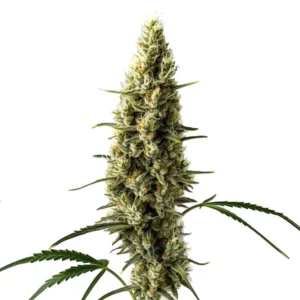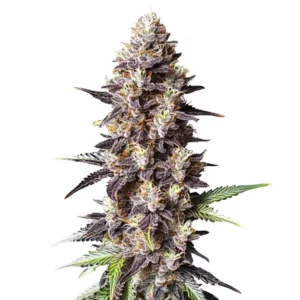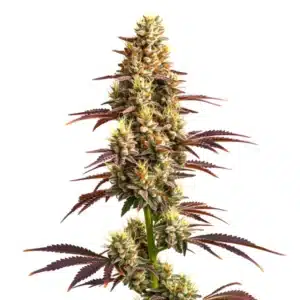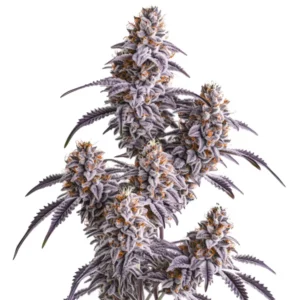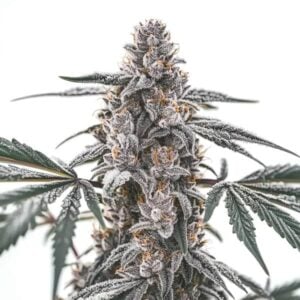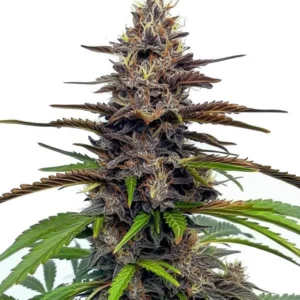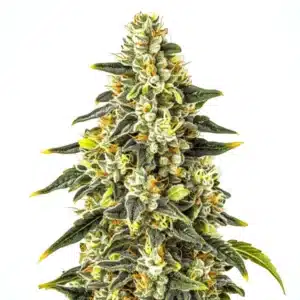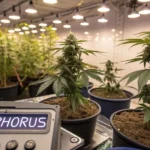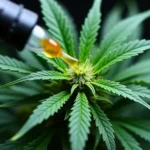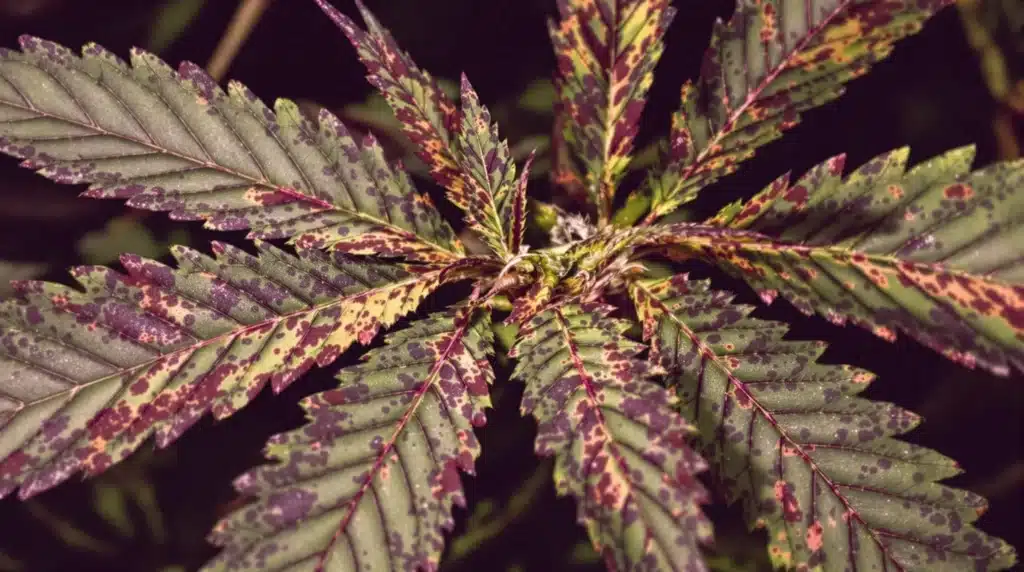
Phosphorus Deficiency in Cannabis: Signs, Solutions
What is Phosphorus Deficiency in Cannabis?
Phosphorus is an essential nutrient for cannabis plants, important for energy production, root development, and overall growth. When cannabis plants suffer from a lack of phosphorus, they may exhibit stunted growth, poor bud development, and decreased resistance to diseases. This issue can become especially problematic for high-THC strains, as they often require more nutrients to reach their full potential.
Promos & Deals
Identifying Visual Signs of Phosphorus Deficiency
Recognizing phosphorus deficiency early is essential for managing it before it affects the plant’s development stages. Visual symptoms often start subtly, progressing from slight discoloration to more severe damage as the deficiency worsens. By closely monitoring leaf color, texture, and growth patterns, growers can spot the early warning signs and address the issue before it impacts the quality of the buds.
Recommended Strains
Super Boof
|
|
THC | 25% - 28% (High) |
|
|
Type | Feminized |
|
|
Yield | Low |
|
|
Phenotype | 60% Indica / 40% Sativa |
Super Boof Auto
|
|
THC | 25% - 28% (High) |
|
|
Type | Autoflowering |
|
|
Yield | Low |
|
|
Phenotype | 60% Indica / 40% Sativa |
Failure to detect and correct phosphorus deficiency can lead to compromised yields, as well as a noticeable drop in the potency and flavor of high-THC strains. Since phosphorus plays a direct role in cellular functions essential for growth, any deficiency interferes with the plant’s ability to thrive, resulting in smaller, less resinous buds. To avoid these setbacks, it’s vital to know what to look for when assessing cannabis plants.
- Purpling or Reddening of Leaves: One of the first signs of phosphorus deficiency is a purplish or reddish color appearing on the stems and undersides of leaves. This is often more pronounced on older, lower leaves.
- Leaf Curling and Necrosis: As phosphorus deficiency progresses, leaves may start curling or twisting. The edges can become brittle, eventually turning brown or black. This condition, known as necrosis, signals cell death within the plant tissue.
- Slower Growth and Weak Stems: A lack of phosphorus can stunt overall plant growth. The stems may appear weak and thinner than usual, and new growth will likely be delayed or fail to develop properly.
- Reduced Bud Formation: Phosphorus deficiency can greatly affect the flowering stage, leading to smaller and less potent buds. Since phosphorus is crucial for energy transfer during flowering, deficiency can significantly impact yield and cannabinoid levels.
- Yellowing Between Veins: In severe cases, yellowing may appear between the veins of older leaves. This symptom, known as interveinal chlorosis, can spread if not corrected.
Causes of Phosphorus Deficiency in Cannabis Plants
Understanding the underlying causes of phosphorus deficiency in cannabis plants is essential for preventing it. The factors influencing phosphorus availability in soil or hydroponic systems range from pH imbalances to environmental conditions. Each factor can reduce the plant’s access to this critical nutrient, even if it is present in the growing medium.
Cannabis plants need an ideal pH range to uptake phosphorus effectively, so when conditions are outside these ranges, phosphorus can become unavailable to the roots. Additionally, growers may unknowingly create an environment that restricts phosphorus uptake through overwatering, suboptimal temperatures, or improper soil conditions. Recognizing these influences helps growers manage the root environment for maximum phosphorus availability.
- Incorrect pH Levels: Cannabis plants absorb phosphorus best within a pH range of 6.2–7.0 in soil and 5.5–6.2 in hydroponic setups. Outside these ranges, phosphorus becomes less available, leading to deficiency.
- Cold Temperatures: Low temperatures, especially below 15°C (59°F), slow down the plant’s ability to uptake phosphorus. This can be a problem for outdoor grows in cooler climates or indoor grows with inadequate heating.
- Soil and Nutrient Quality: Low-quality soil lacking in phosphorus or using fertilizers without sufficient phosphorus content can also cause deficiency.
- Overwatering: Excessive water can compact soil, reducing aeration and hindering nutrient uptake, including phosphorus.
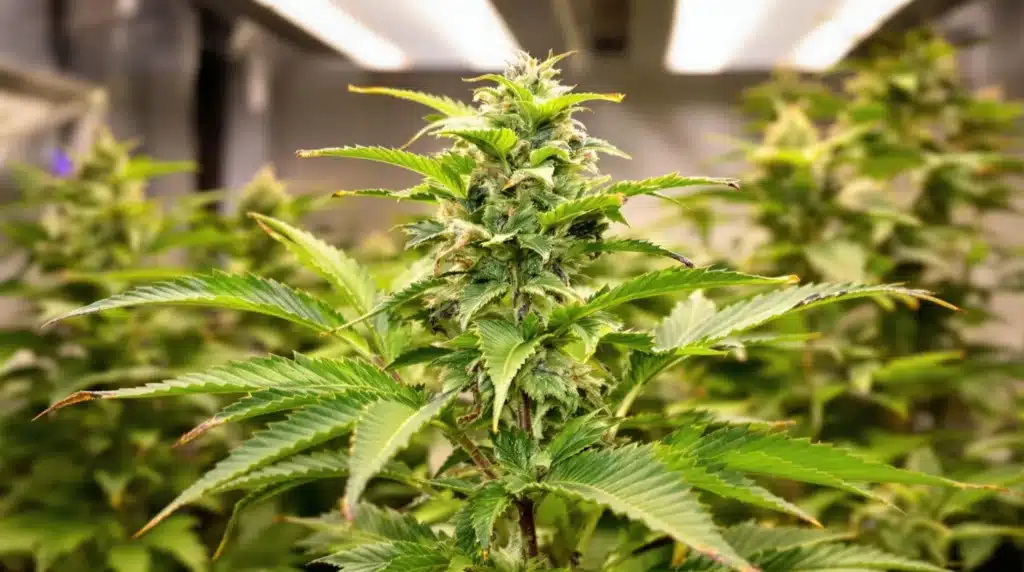
How to Correct Phosphorus Deficiency in Cannabis Plants
Addressing phosphorus deficiency in cannabis plants is most effective when corrective measures are taken immediately. Once the deficiency is identified, growers can employ targeted solutions to restore nutrient levels. Each method, from pH adjustment to adding phosphorus-rich nutrients, works to ensure that plants regain access to this vital nutrient, allowing them to resume healthy growth and bud development.
Choosing the right approach depends on the severity of the deficiency and the specific needs of the cannabis strain. Since high-THC strains are particularly sensitive to nutrient imbalances, any corrective action should be closely monitored. Addressing phosphorus deficiency early not only promotes the plant’s health but also ensures optimal potency and yield.
- Adjust pH Levels: Testing and adjusting the pH of your growing medium is critical. Ensure soil pH is within the 6.2–7.0 range and hydroponic systems are between 5.5 and 6.2. Adjust pH with appropriate products like pH up or pH down solutions to bring your medium to optimal levels.
- Improve Soil Quality: Using high-quality, phosphorus-rich soil can prevent deficiencies. You may also consider adding organic matter like compost, which naturally contains phosphorus.
- Use Phosphorus-Boosting Nutrients: Add phosphorus supplements like bone meal, rock phosphate, or fish meal to the soil for an organic boost. For faster results, use liquid fertilizers high in phosphorus, ensuring that the nutrient ratio emphasizes phosphorus.
- Control Temperature: Keep your grow environment within an optimal temperature range. Avoid temperatures below 15°C (59°F) to maintain phosphorus availability. Adjusting the climate in outdoor grows can be challenging, but using greenhouses or heating lamps for indoor setups can help.
- Avoid Overwatering: Allow the soil to dry out between waterings to prevent compaction. Improving drainage can also help prevent phosphorus lockout due to excess moisture.
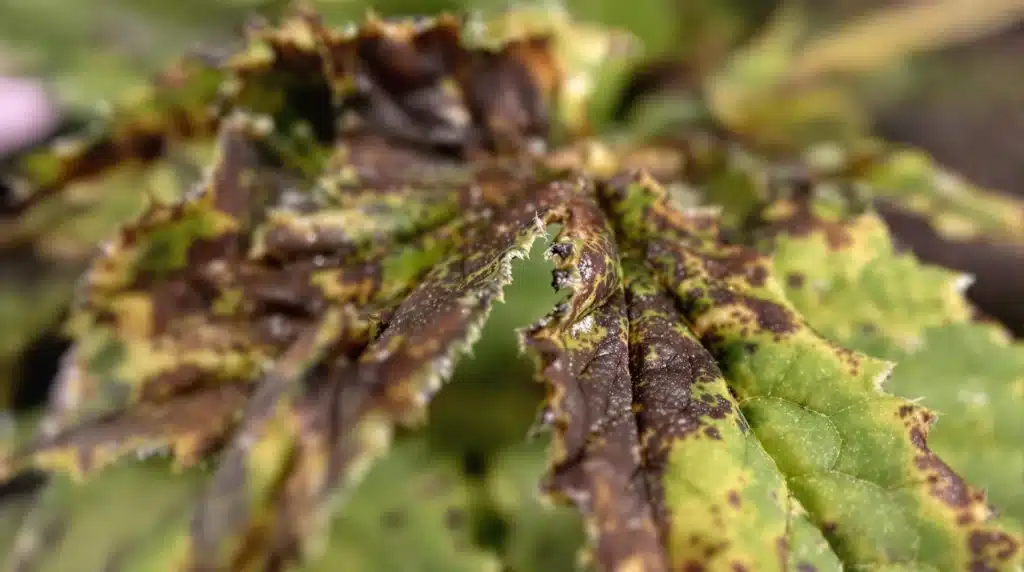
Phosphorus Deficiency’s Impact on High-THC and THCA Cannabis Strains
For high-THC and THCA cannabis strains, phosphorus deficiency poses unique challenges. These strains demand higher nutrient levels to fuel their vigorous growth and cannabinoid production. When phosphorus is deficient, it disrupts processes essential for resin production, which can reduce the final THC content and affect the plant’s overall potency and aroma profile.
Growers focused on high-THCA strains need to be especially vigilant, as phosphorus is critical in forming the dense, resinous buds these strains are known for. By ensuring an adequate phosphorus supply, growers can enhance both yield and quality, achieving the potent and flavorful buds that consumers expect from high-THC strains.
- Higher Nutrient Demand: Strains with high THC levels tend to have increased nutrient demands to support their robust growth and bud formation. Phosphorus is critical for the development of resin glands, where THC is concentrated, and any deficiency can reduce THC content.
- Reduced Potency and Terpene Production: Phosphorus deficiency during flowering can compromise cannabinoid and terpene synthesis. This means high-THC strains may not reach their full potency, impacting the overall effectiveness of the final product.
- Limited Bud Density: Buds grown under phosphorus-deficient conditions may be smaller, airy, and lack the desired density, diminishing both yield and quality. For growers focusing on high-THCA strains, phosphorus is vital to achieve the potent, resin-rich flowers these strains are known for.
Tips for Preventing Phosphorus Deficiency in High-THC Cannabis Strains
Proactive phosphorus management is key for growers cultivating high-THC cannabis strains. Preventing phosphorus deficiency starts with creating optimal conditions for nutrient uptake, including stable pH levels, quality nutrients, and a suitable climate. By maintaining a healthy root environment, growers can promote robust growth and maximize bud quality.
Implementing preventive measures also ensures that cannabis plants have continuous access to essential nutrients during critical stages, especially the flowering phase. Consistently monitoring these conditions helps growers avoid setbacks, enhancing the strain’s natural characteristics, potency, and overall appeal.
- Regular pH Testing: Test your soil or hydroponic solution regularly to maintain optimal pH levels. This ensures phosphorus availability throughout the plant’s lifecycle.
- Choose High-Quality Nutrients: Select nutrients designed for cannabis, focusing on phosphorus-rich formulas during the vegetative and flowering stages. Many high-quality fertilizers offer specific blends for cannabis to meet its unique nutrient requirements.
- Consider Supplementing with Phosphorus in Early Flowering: Start supplementing phosphorus as soon as your plants begin to show pre-flowers. This will support energy transfer, bud development, and resin production.
- Ensure Proper Drainage and Aeration: Well-drained soil prevents waterlogging and nutrient lockout. Consider adding perlite or coco coir to improve aeration and allow the roots to access phosphorus efficiently.
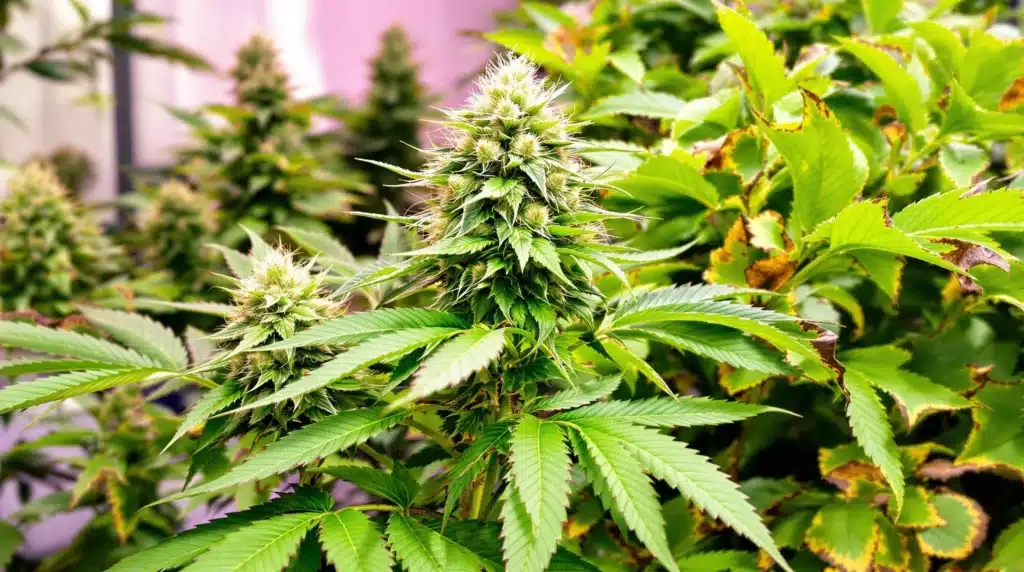
Frequently Asked Questions
How can I tell if my cannabis plant is suffering from phosphorus deficiency?
Look for signs like purpling on the stems and leaves, leaf curling, and yellowing between veins. These symptoms usually appear on older leaves first and progress if untreated.
Can phosphorus deficiency affect the potency of THC in my cannabis plants?
Yes, phosphorus is essential for bud development and resin production, which are crucial for high-THC content. Deficiency can lead to reduced potency and lower terpene levels, affecting flavor and aroma as well.
How do I correct pH to improve phosphorus uptake?
Test the pH level of your soil or hydroponic solution and adjust it accordingly. For soil, aim for 6.2–7.0, and for hydroponic systems, aim for 5.5–6.2. Adjustments can be made using pH up or pH down products.
What are some organic options to boost phosphorus levels in cannabis plants?
Bone meal, rock phosphate, and fish meal are excellent organic sources of phosphorus. They work slower than synthetic options but provide a steady phosphorus supply.
How does temperature affect phosphorus availability in cannabis?
Phosphorus uptake decreases in colder temperatures, particularly below 15°C (59°F). Maintaining an optimal temperature range is essential, especially for indoor growers who have more control over the climate.
Are high-THCA strains more susceptible to phosphorus deficiency than others?
High-THCA strains generally require more nutrients, including phosphorus, to develop their resinous buds. Phosphorus deficiency can lead to lower THCA content and affect the overall quality of the yield.
Maintaining optimal phosphorus levels is key to growing potent, high-yielding cannabis. By monitoring for early signs of deficiency and taking steps to correct or prevent issues, you can help your plants thrive, producing high-quality flowers with the desired potency and flavor profile.



